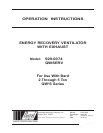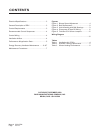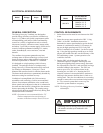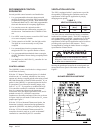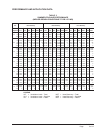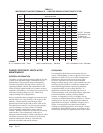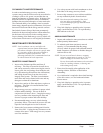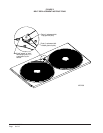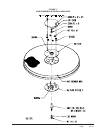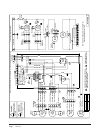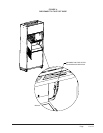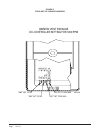
Manual 2100-533A
Page 6 of 12
ENERGY RECOVERY VENTILATOR
MAINTENANCE
GENERAL INFORMATION
The ability to clean exposed surfaces within air moving
systems is an important design consideration for the
maintenance of system performance and air quality.
The need for periodic cleaning will be a function of
operating schedule, climate, and contaminants in the
indoor air being exhausted and in the outdoor air being
supplied to the building. All components exposed to the
airstream, including energy recovery wheels, may
require cleaning in most applications.
Rotary counterflow heat exchangers (heat wheels) with
laminar airflow are “self-cleaning” with respect to dry
particles. Smaller particles pass through; larger
particles land on the surface and are blow clear as the
flow direction is reversed. For this reason the primary
need for cleaning is to remove films of oil based
aerosols that have condensed on energy transfer
surfaces. Buildup of material over time may eventually
reduce airflow. Most importantly, in the case of
desiccant coated (enthalpy) wheels, such films can close
off micron sized pores at the surface of the desiccant
material, reducing the efficiency with which the
desiccant can adsorb and desorb moisture.
FREQUENCY
In a reasonably clean indoor environment such as a
school, office building, or home, experience shows that
reductions of airflow or loss of sensible (temperature)
effectiveness may not occur for ten or more years.
However, experience also shows that measurable
changes in latent energy (water vapor) transfer can occur
in shorter periods of time in commercial, institutional
and residential applications experiencing moderate
occupant smoking or with cooking facilities. In
applications experiencing unusually high levels of
occupant smoking, such as smoking lounges, nightclubs,
bars and restaurants, washing of energy transfer
surfaces, as frequently as every six months, may be
necessary to maintain latent transfer efficiency. Similar
washing cycles may also be appropriate for industrial
applications involving the ventilation of high levels of
smoke or oil based aerosols such as those found in
welding or machining operations, for example. In these
applications, latent efficiency losses of as much as 40%
or more may develop over a period of one to three years.
NOTE: Sensible
performance only
is shown for
winter application.
TABLE 3
WINTER HEATING PERFORMANCE — (INDOOR DESIGN CONDITIONS 70°F DB)
tneibmA
.D.OETARNOITALITNEV
BD
FseergeD
.ffE%08MFC054.ffE%18MFC573.ffE%28MFC003
TLVSRHSLVTLVSRHSLVTLVSRHSLV
56034244916845202046158302618231292
06068488832790504082307704236562385
5509272385854157060294451106845893578
05027967774491001816569351084631356611
5405121027903425210110284291001824668541
04085414661161920512114899032027907970571
5301071806312043571411841139620431189291402
03044912555188830026122131870306921726013332
52078126947147345228126741364308541559114262
02003420449106840520220461848300261482316192
51037624831264355722224081232402871216418023
01061928233223850034238691716404491149519943
5095132725281365236232312200506012962711973
0020436127240860538246922783508622895812804
5-054630619209275730340642177500342629914734
01-088834011367770042344262651602952452126664
LEGEND
VLT = Ventilation Load – Total HRS = Heat Recovery – Sensible VLS = Ventilation Load – Sensible



